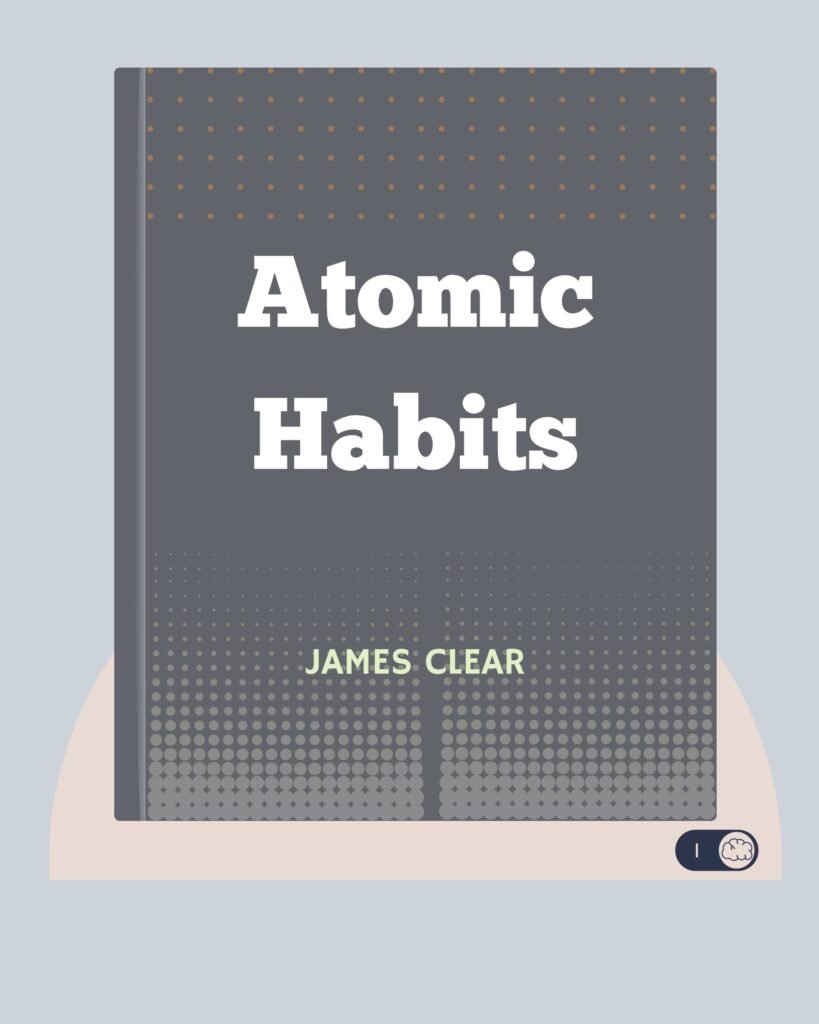
Atomic HabitsBy James Clear
What is the book about in 3 Sentences
- Easy way to form new habits and break bad ones
- Tiny habits produce success when repeated over time
- Stories of CEOs and athletes who produced groundbreaking results using atomic habits
Who’s it for ?
The book is recommended for people of all age groups and professions particularly those trying to:
- Break bad habits
- Increase productivity
- Lead a disciplined life
Top 3 Favourite Quotes
Habits are like the atoms of our lives. Each one is a fundamental unit that contributes to your overall improvement. At first, these tiny routines seem insignificant, but soon they build on each other and fuel bigger wins that multiply to a degree that far outweighs the cost of their initial investment. They are small and mighty.
Trending
You do not rise to the level of your goals. You fall to the level of your systems.
People who are at better at delaying gratification have higher SAT Scores, lower levels of substance abuse, lower likelihood of obesity, better responses to stress, and superior social skills. Success in nearly every field requires to ignore an immediate reward in favour of a delayed reward.
Summary + Reflections
The Journey Of James Clear
“James Clear, the author of Atomic Habits, suffers from a serious injury during a baseball game that took him into coma. The injury left him with a broken nose, multiple skull fractures and two shattered eye sockets. Despite being released from the hospital, he suffered from double vision, post-traumatic seizures and struggled with basic motor skills. When he returned to the baseball field after year, he was the only junior to be cut from the varsity baseball team. By the end of his high school, James Clear barely played more than a single game.
Fast forward to six years later, James Clear was selected as the top athlete at Denison University and was named to the ESPN Academic All America Team. He was also awarded the highest academic honour, the President’s Medal, that same year.
What changed James Clear’s life? He realised the importance atomic habits. He understood that small changes which seem unimportant at first will compound into remarkable results if continued for years.
Currently, James Clear is the founder of Habits Academy and is the founder of jamesclear.com which is one of the most popular weekly newsletters on the Internet.
Small Habits Pave The Road To Big Wins
Atomic Habits are those habits which are seemingly small. We fail to realise their impact in our day to day lives. But as time passes, they compound one another to produce remarkable results. If one starts to better himself in a habit by 1% everyday, the betterment adds up over time. A 1% change is unnoticeable. However, after one year, the 1% change compounds itself to produce a habit 37 times better than the initial state. Similarly, if one worsens a habit by 1% everyday, the habit would depreciate to zero after a year. This is based on simple exponential math. This proves that habits have the power to work for us or against us.
In the pursuit of huge wins, we often fail to realise the impact of small changes. However, it is these small changes which ultimately compound to produce big wins. Such small changes require time to showcase their true impact on our lives. These habits are like melting ice. No one notices how the temperature of ice rises from 4° C to 1° C. But we notice the instantaneous melting of ice when the temperature reaches 0° C even though there were tiny rise of temperature all along unnoticed which took it to the melting point.
Goals Don’t Produce Results, System Does.
The system includes our environment and our identity. Often we mistake ourselves by thinking that “goals produce results”. It is a false belief. In reality, winners and losers have the same goals. It is the difference in system that produces the change.
One may have the goal to bulk up his body for gains. But it will only be possible if he changes his diet, goes to a gym, hire a proper trainer and a nutritionist. Similarly, one may have the goal to become the top student of the class. But it is not the goal which helps to achieve them. Rather it is the methodology used in studying, the books referred, and the guidance from teachers which help one to become the top student in class. Therefore, focus on the system. Not the goals.
The reason why resolutions die for people after a few days is due to the presence of cracks in their systems. Those who wish to pray five times a day but do not buy a prayer mat is less likely to achieve their goal. As we will see later, the science of habit formation and destruction depends upon changing systems to accommodate the change.
Habits And Identity: A Mutual Force
Our identity also play a key role in our habits and systems. James Clear explains that behaviour change occurs at three levels:
- Change at level of outcome: This type of change focuses on end results and goals. Most people focus on outcomes but without having a proper system, they will eventually fail.
- Change at level of process: This type of change focuses on your actions than goals. For example, if you are focused on outcome-change, you will set a goal to read 10 pages a day. But if you are focused on change in the process, you will decide to change your environment so as to reach your goal of reading 10 pages a day. This would include making books available in hand to read, setting up a proper timetable for reading, avoiding distractions and ensuring an environment that facilitates reading.
- Change at level of identity: This type of change focuses on being who you want to be. For example, here you focus on being a reader rather than being the one who reads 10 pages a day. This is when habits are formed and retained. True habit formation is identity change.
How can one attain the identity change? The answer is by consistency. James Clear tells us that “habits and identity reinforce each other”. Your Habits shape your identity and your identity shape your habit.
Science Of Habit Formation in Four Simple Steps
There are four key elements that enable habit formation. These include cue, craving, response and rewards. All of our daily actions revolve around these four elements.
- Cue: They are the triggers which are present in our surroundings. Our mind picks up the cue to initiate a habit. The cue can be anything: an object, a thought, your environment. In simple words, Cue reminds you of the habit you want to do.
- Craving: They are the driving source of motivation to perform your habit. They anticipate the reward and pushes us to perform the behaviour. Cravings ensure that we seek for rewards and thereby repeat our habits again and again.
- Response: They refer to the actual act of performing a habit. Once our brain recognises the cue and craves for the reward, it forces us to perform the habit. Responses determine the end result of our habit: the level of reward we get.
- Reward: They are the emotions associated with the habit. They satisfy our craving and determine whether the habit will be repeated or not. They complete the neurological feedback loop by getting linked to the cue.
Having known the four key elements of habit formation and what they do, let us see how they work as a loop to produce sustainable habits:
The cue might be anything: an object, environment or even a thought that runs through our minds. They initiate a craving inside for the reward we expect at the end of the habit. This craving pushes us into response-mode to perform our habit and attain the reward. Once the habit is performed, we gain the reward which we had anticipated. Our brain links our reward with our cue so as to produce a memory of the incident. When we encounter the cue for the next time, our brain remembers our reward that we attained earlier and hence craves for it thereby initiating a new response. This cycle gets continuously repeated until our brain forms strong neurological links between the four elements leading to formation of habits that sustain.
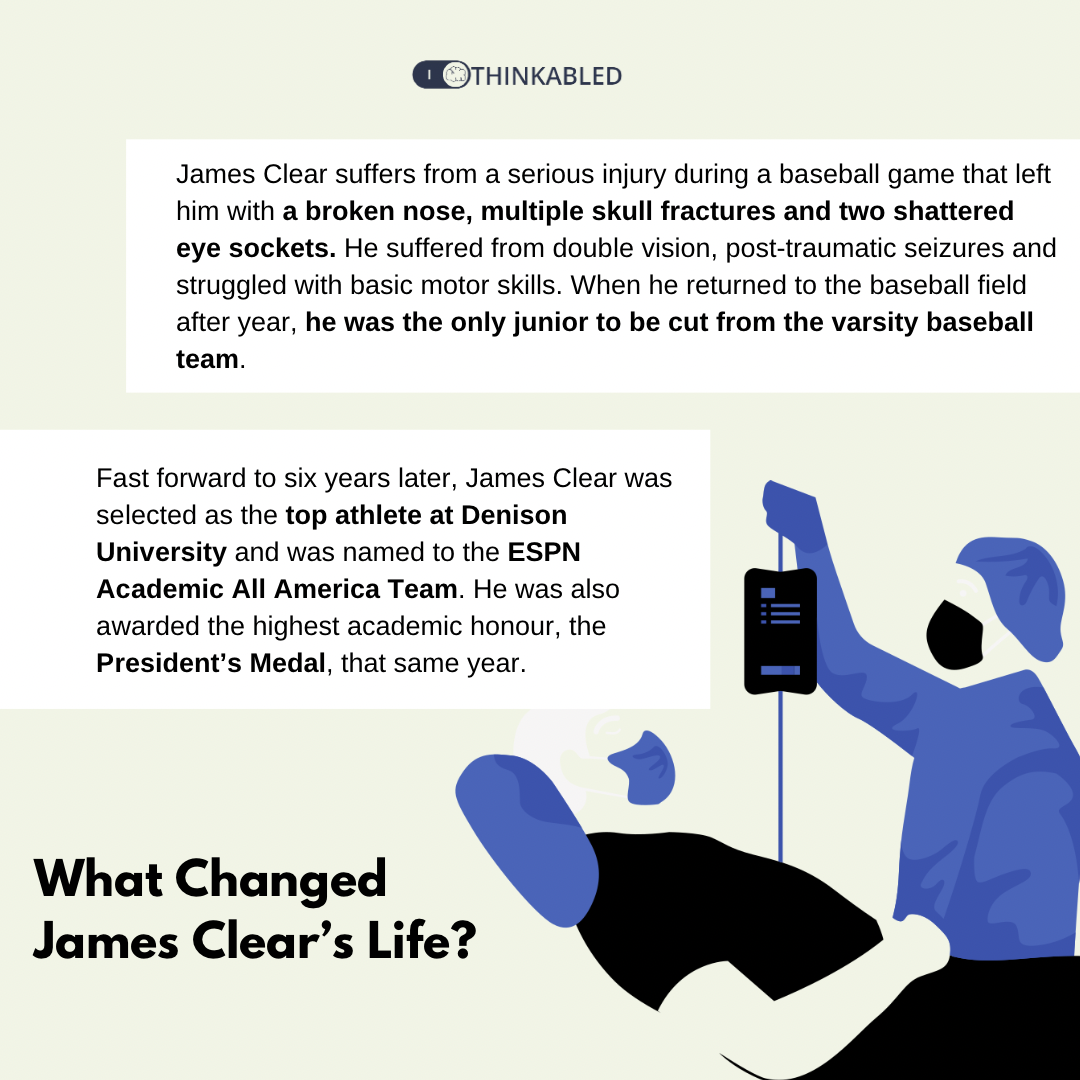
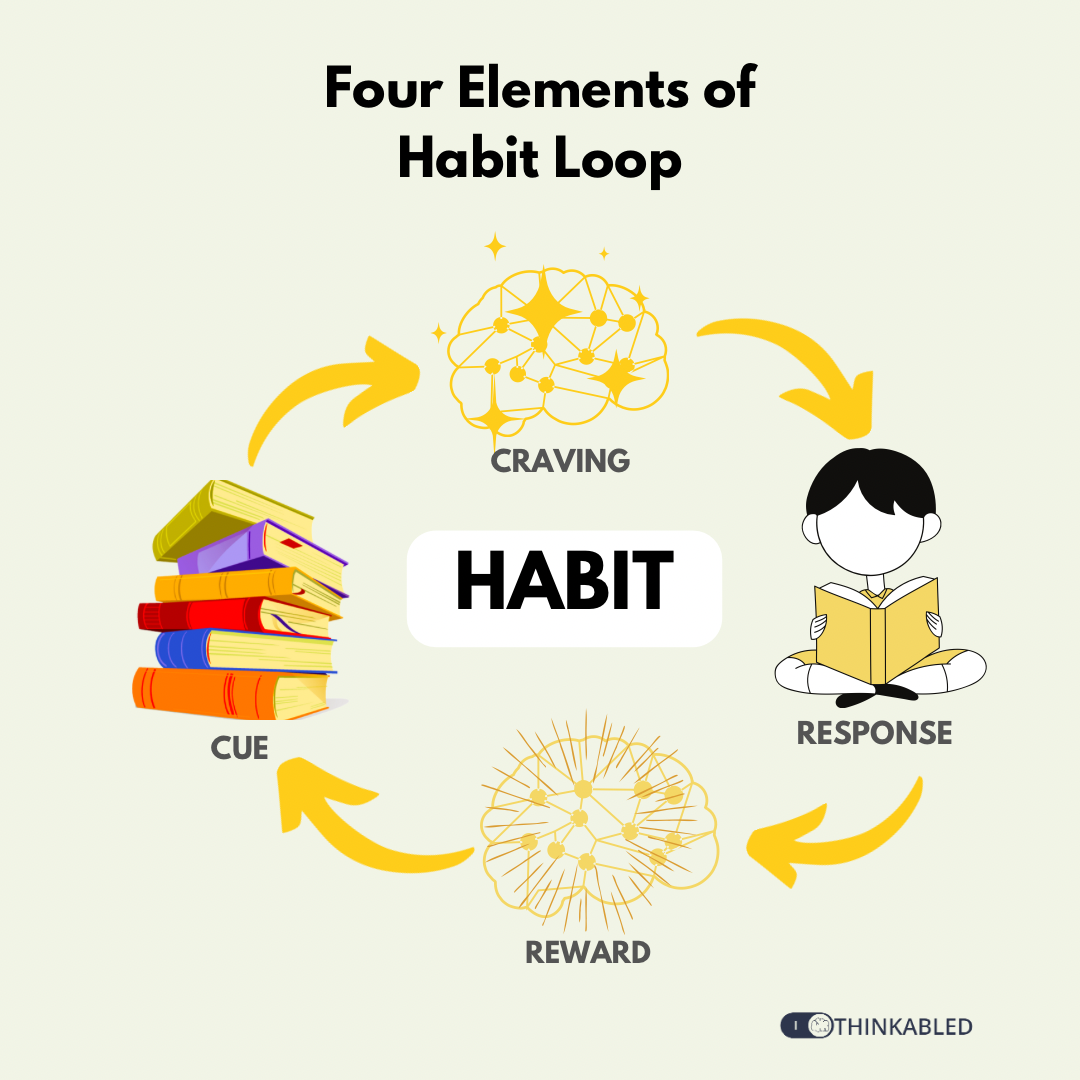
How To Build Good Habits
Habits are repeated continuously until they get automated. True habit formation occurs when our brain unconsciously repeats the behaviour associated with our habit. The key to building habits is by making necessary changes in the four elements of habit formation. For building good habits, one must simplify the four elements: cue, craving, response and reward so that one can easily repeat the habit again and again.
1. Make the Cue Obvious
Cue involves our environment. They include time and location. Our brain has the ability to sense environment and associate our behaviour with the environment. This is why, we often end up doing the same behaviour at the same time and place. When one scrolls up his or her phone casually, they mostly open two or three regularly checked apps unconsciously. When one wakes up in the morning and enters the washroom, brushing the teeth becomes the automated norm.
This happens because of the ability of our mind to link our behaviour with our environment. Hence, the first step in building good habits is by being aware of the environment. One must link his or her environment with the new desired habit. Our brains are cautious of new environments. It takes and processes lots of cues from those environments to create strong neuronal links that are associated with our behaviour. In order to create a new habit, we must first create an environment that accommodates the new behaviour.
For example, to read 10 pages a day before going to bed, we must set up a table with books to read beside our bed. By this our environment is ready. As we keep reading each night, our brain links our table, bedtime and book with the habit of reading. Everytime we read a book in that location and time, stronger neuronal links are formed which result in habit formation.
There are few things to keep in mind while creating new environments. Firstly, even minor changes can produce new environments. For example, shifting the table from one corner of the room to the bedside creates a new environment that could facilitate habit of reading. Secondly, the cues must be obvious and easily visible. The table must be near the bed to facilitate bedtime reading and not inside the other hall. Finally, one existing habit can be linked with a new habit. For example, after brushing your teeth, you make your bed.
2. Make the Craving Attractive
Cues act as triggers which stimulate cravings inside us. Once our brain links our environment to a behaviour, it starts to create a craving everytime we sense the environment. What does the brain crave for and why does it happen?
Our brain craves for the reward associated with our behaviour. This is why every time we see a picture of our favorite food, we start to crave for it and drool. This anticipation of reward is due to the release of dopamine inside our brains. Dopamine provides us with the motivation to act and attain the reward.
Hence, to build a new habit, we must make it attractive. Every time our brain senses our cue, it should anticipate the reward and trigger us to act. One way to do this is by using the method of temptation bundling. Here, we stack our new habit with the habit we want to do. For example, if we need to read 10 pages before going to bed, we will do it before reciting the prayer for sleep (something we want to do). If we want to do ten pushups after waking up, do them before our morning cup of coffee (something we want to do).
Our habits are likely to last if we associate ourselves with people with similar habits. Human beings have a natural tendency to fit inside social groups. If our behaviour is accepted and approved by our social circle, we are more likely to stick to it. Moreover, if they are praiseworthy, we will definitely repeat the behariour. Hence, to create new habits, associate yourself with people who appreciate and approve the habit. This is why gym partners enhance the performance of each other and end up getting better and fitter together.
3. Make the Response Easy
Cues and cravings act as sources of motivation to take action. But the behaviour occurs only with our action. Habit formation occurs only if behaviours are repeated again and again until they get automated in our brains. It is not the level of planning or the amount of time that we spend on a behaviour that determines its automation. Rather, it is the number of times we repeat the behaviour that determines habit formation.
Hence, we must look for ways to make our actions easier so that we repeat them continuously. Human beings tend to behave in a manner which expends the least energy and effort. That is why we end up scrolling on our phones checking up on emails or social media apps rather than spending those time on the gym. Our responses should be made easier so that they require least effort. This can be made possible by designing our environment to remove obstacles to our actions.
For example, by setting up a table near the bedside, we have made the cue obvious for reading. Filling it up with books makes it easier to read than reaching out to a book from the shelf to read. Similarly, being regular at the gym after work becomes easier if we chose a gym en route to home from work. Therefore by reducing the friction between our desired habit and the environment, we can make our responses easier and repeat our behaviour more often to produce habits.
It is also essential for a person to be aware of decisive moments in habit formation. These are decisions which by itself do not lead to action but a string of actions are produced as a consequence of these decisions. For example, the decisive moment in working out in the evening would be having a bath after work. Workouts fail to occur if I decide to have a bath after work. It is discouraging to work out after a bath for me. Hence by skipping the bath and wearing out my workout clothes, I have taken the step towards hitting the gym. Similarly if we could sort out the decisive decisions that lead to a chain of actions, we can drive those decisions in favour of habit formation.
Our actions can be made easier by using the Two-Minute rule. The Two-Minute rule states that “when you start a new habit, it should take less than two minutes to do.” This rule helps in building large habits over time. We can break down every habit into simpler steps which can be done under two minutes. For example, let’s say our goal is to read an entire book in a week. We can break down this goal into a series of smaller goals which can be achieved easily. Reading one chapter is easier than reading one book. Reading one page is easier than reading a chapter. And reading a paragraph of a page takes less than two minutes. When we start out on a habit, start with habits which takes less than two minutes to do such as reading a paragraph. Repeat this habit countless times until we standardise it and then go on to improve our habit to read a page a day.
Finally our responses could be made easier if they are automated using existing technology. For example, when I started posting on ThinkAbled, I had to spend a lot of time setting up the outlook for each of my blogs. Simply setting up a standardised template for my blogs made my work much more easier. I could directly export my article into the new template and get it posted . This single decision saved half an hour of my work on each blogpost.
4. Make the Reward Satisfying
Our human brain is wired to seek rewards and avoid punishments. Moreover, these rewards must be instantaneous and not delayed. When faced with two options: one which provides instantaneous gratification and the other which provides delayed gratification, human beings tend to gravitate towards those behaviours which provides instantaneous gratification. Cue, craving and response associated with a behaviour allows a behaviour to occur but it is the reward associated with the behaviour that ensures repetition.
However, in general, good habits tend to have delayed gratification while bad habits tend to provide us with instant gratification. Working out provides its benefits over long term while smoking provides us with an instant release of stress and anxiety. This is why it is easier to stick to the habit of smoking than to the habit of working out regularly.
Therefore, to stick to good habits, one must make their rewards satisfying. One of the best ways to make our habits satisfying is by tracking down the habit. Tracking down helps us to know how much we have progressed and the knowledge about our progress acts as a source of gratification which motivates us to continue performing the behaviour. Habit tracking also acts as a visual cue to repeat the habit. Habits also stick together if we can provide immediate rewards for our behaviour.
How to Break Bad Habits
Habit destruction works in contrast to habit formation. If we could reverse everything which we have discussed so far, we would be able to destroy bad habits.
1. Make the Cue Invisible
For many people, breaking a bad habit is much more difficult than forming one. This is because once a habit is formed, it is unlikely to be ever forgotten. Every single time our brain senses the cue associated with the habit, it triggers the reward centre and facilities the action. This is why the idea of self-control fails in the long run. The idea is not to make our brain forget our habits but rather make the cues invisible for the brain to recognise. Hence, the best way to break a bad habit is by changing our environment. When a brain fails to recognise a cue associated with a bad habit, it fails to act. For example, our lives would get much better if we unfollow those who instill a sense of jealousy inside us on Instagram.
2. Make the Cravings Unattractive
Cravings indicate a deeper underlying motive. Habits are actually solutions to the problems that we face. For example, when a person gets anxious, he or she seeks solution for their anxiety. Some people find solution by smoking while others find solution by listening to relaxing music. Our cravings are actually a source of motivation to seek solutions to our problems. In the pursuit of fulfilling the solutions, we form habits whether they are destructive or productive in the long run.
The way to break bad habits is by making them unattractive. One of the ways of making a bad habit unattractive is by associating with people who view the behaviour or habit as a sin or an undesirable act. We can also make habits unattractive by associating them with negative emotions. If a smoker decides to read an article on “how to quit smoking and why” every single time he or she lit up a cigarette, gradually they are more likely to come to the conclusion that smoking is one of the most ridiculous things to do in life.
3. Make the Response Difficult
Unlike forming good habits, changes in cue and cravings produce a dramatic difference in repelling bad habits. If we could make our bad behaviour more difficult to perform, they would start to die. If our bad behaviour requires a lot of energy to perform, we would be discouraged to continue with that particular behaviour.
Unfortunately, most of the addictions are easy to perform. It is much easier to scroll through social media for hours on our mobile phone than to read a book on human psychology. One of the keys to break bad habits is by developing means to make the bad habit impossible to perform. For example, by setting up apps that prevent you from using social media more than half an hour a day, there is a drastic improvement in social media addiction. By buying a smaller fridge, there will be less food to store thereby discouraging overcooking. Similarly, one should use existing technology to make bad habits impossible and good habits irresistible.
4. Make the Reward Painful
The worst thing about addiction is that they provide us with an instant gratification. It is the pursuit for instant gratification that initiates a craving inside us. If we could make our habits unsatisfying, there would be less motivation to return to that habit. Bad behaviours can we made unsatisfying by associating it with something painful or with a punishment.
As humans, we abide by social contracts. We are bound to follow laws and regulations that restrict bad behaviour and are punishable. If we could regulate our bad behaviour and make them punishable, we are less likely to repeat it. Creating a habit contract with an accountability partner does exactly this. Imagine if you had to pay hundred bucks as a punishment for every single cigar you light up. You will slowly start to give up on smoking. Having an accountability partner also act as a powerful motivator to quit bad habits.
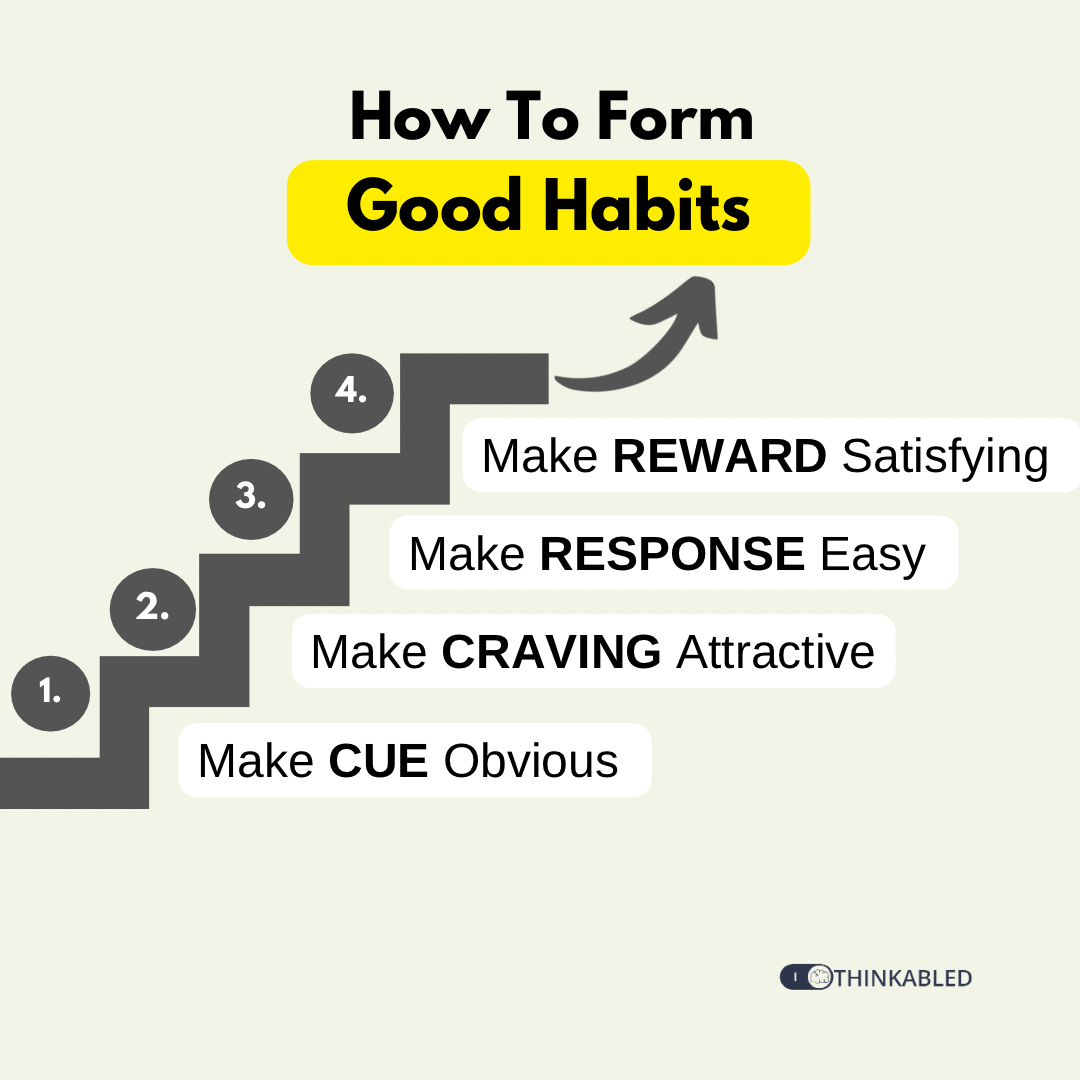
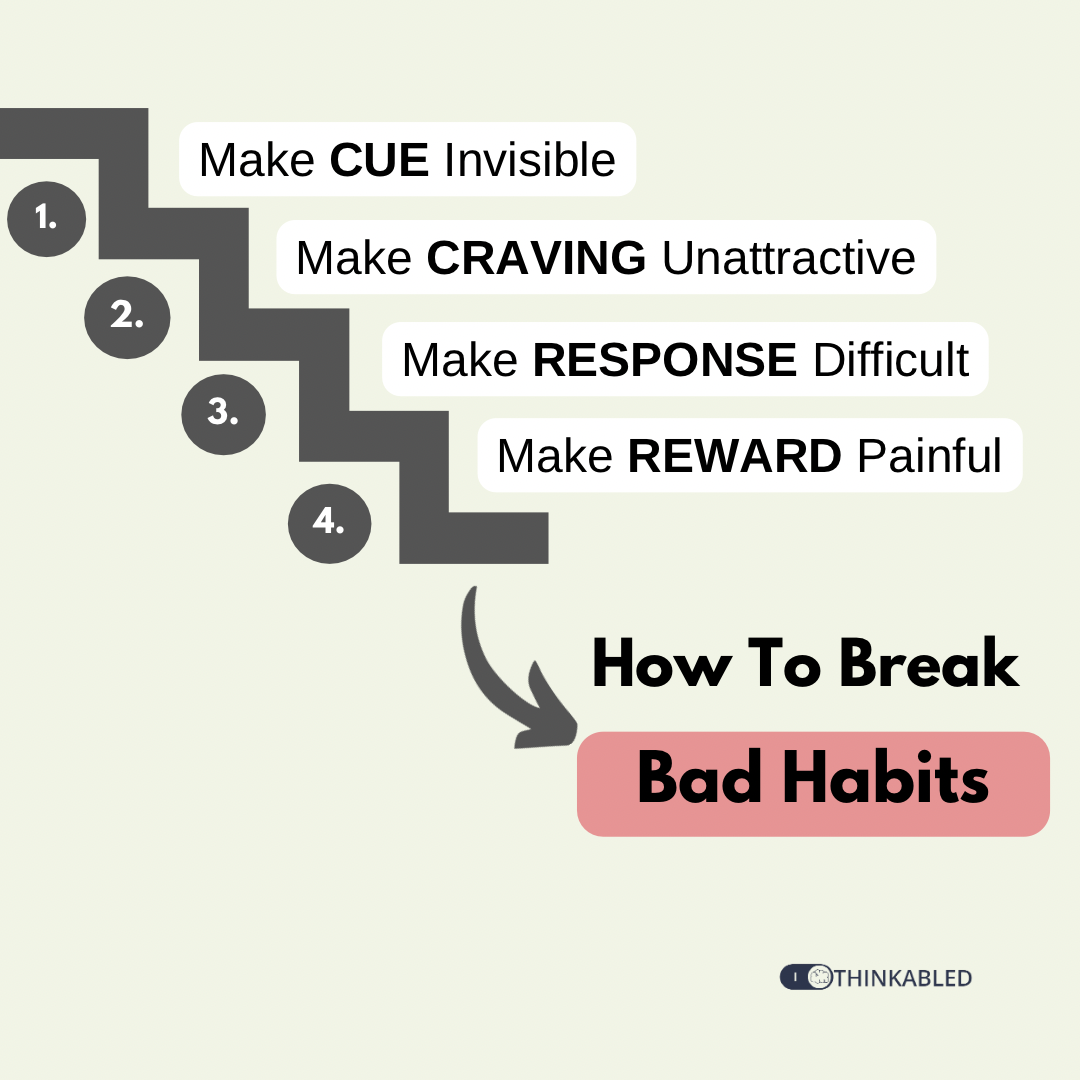
Genes, Goldilock’s Rule and Greatness
While deciding to form new behaviour, we must choose behaviours that incline with our natural abilities. It is well known that genes play a role in all of our behaviours. Habit formation is easier when our genetic predisposition aligns with our behaviour. For example, if you are a tall person, you are more likely to succeed in basketball then other sports. Certain people have better memory and ability to learn things than others. They are more likely to succeed in academia over their colleagues. However, it is important to realise that genes neither eliminate hard work nor necessarily guarantee success. Instead, they act as facilitators for our behaviours and help in forming habits that suit us.
What motivates the human brain to perform continuously in the long run is something that scientists have been trying to decode for a long time. This is where Goldilock’s Rule comes to play. According to Goldilocks rule: Humans experience peak motivation when working on things that are right on the edge of their current abilities. We feel demotivated when we work on tasks that are either too difficult or too easy to perform. This is why it is difficult to play tennis seriously with a four year old boy. This is also why it would be difficult to play tennis regularly with Roger Federer or Rafael Nadal. We seek challenges that are within our reach yet take us to a state better then our current state. Hence, to maintain habits in the long run, we must constantly try to improve and challenge within our limits.
However, no matter how well we have designed our behaviour, eventually, all habits start to become boring at some point. It is the reaction to boredom which separates professionals from amateurs. Amateurs give up when boredom strikes and they seek new behaviour or habit to perform. On the other hand, professionals stick to their habits even when things tend to become boring. They show up every day even when they don’t feel like having to. Over time, professionals acquire mastery of their skills while amateurs keep on jumping from one behaviour to the other without turning pro.
Do good habits, if repeated continuously, necessarily lead to mastery? Habits are the foundation for mastery. However, when we fail to review and reflect over our habits, we stop paying attention to the little errors that occur along the way. This becomes significant when one pursues greatness in a skill. The way to mastery involves improvement apart from automating the basic skills. Once we have internalised the basic skills and automated them, we must build upon those skills and and focus our energy into more advanced skills.
This is possible only if one reviews and reflects over their habits. It is essential to have a system that checks our habits regularly. In the absence of such regulatory systems, we fail to understand mistakes, realise our progress, and find areas where improvement is required. Rather than growing and mastering our skills, we end up doing the same thing again and again unconsciously without any improvement. Therefore, to achieve greatness, periodic reflection and reviewing is necessary. It is the antidote to the disease of lack of self-awareness.
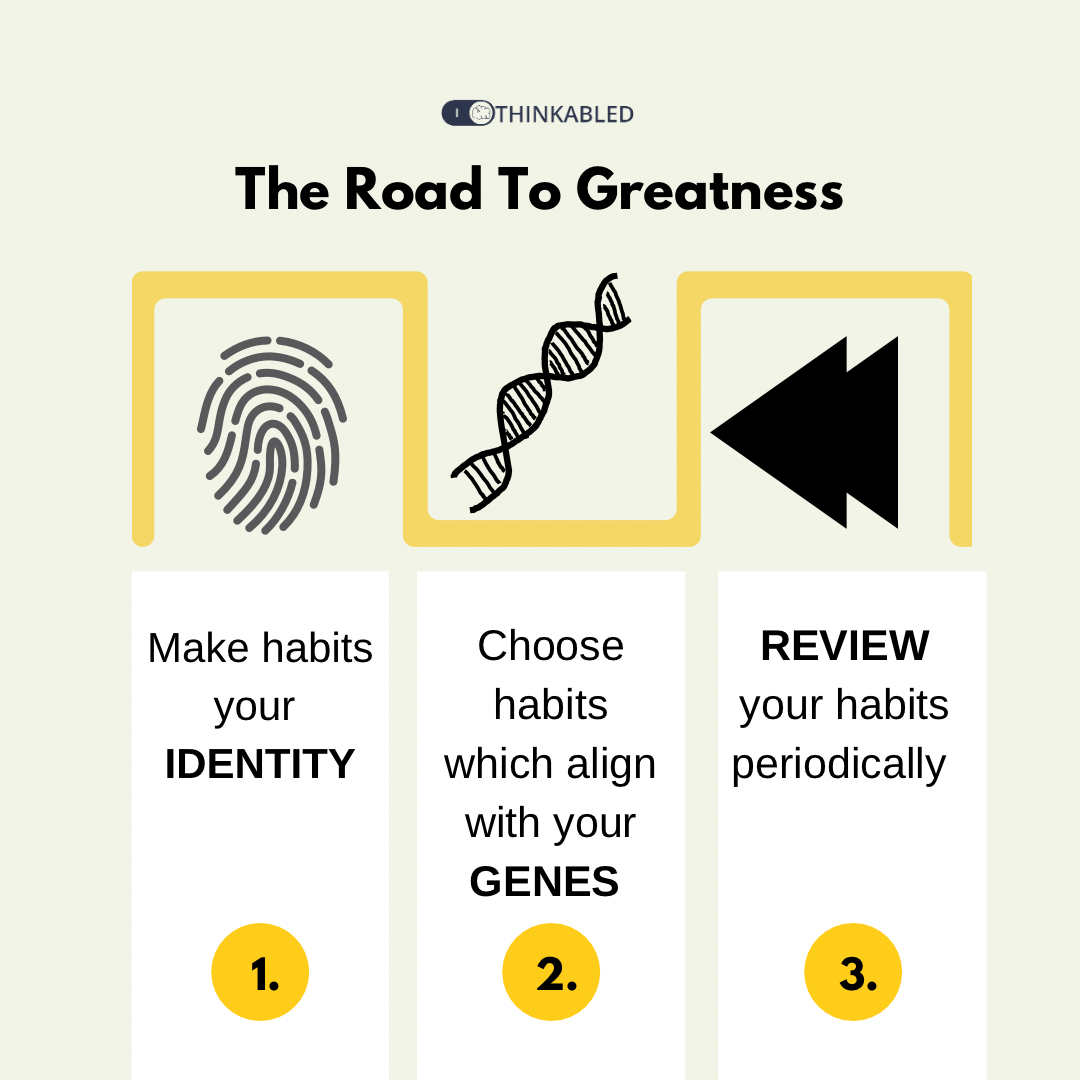
Download Infographics For Atomic Habits
More Book Notes
Interpretation of Human Historyby James Clear
How To Take Smart Notes by Sönke Ahrens
Notes on Nationalism by George Orwell
For other book notes, click here
